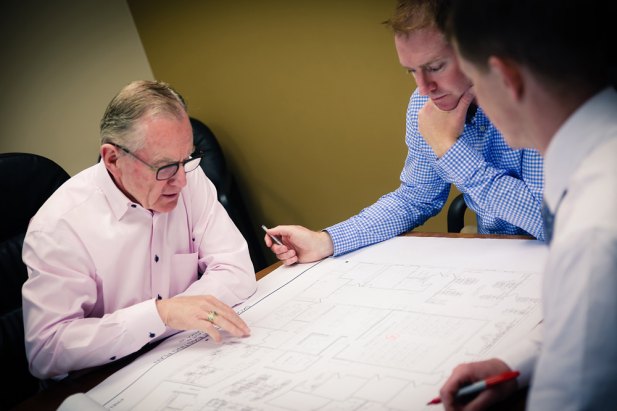
How much space do I need for my business?
Here’s the key to knowing how much square footage you need
When space availability is a perpetual challenge and your current space no longer suits your needs, it may be time to build a new space or expand your current location. But how much space will you need, both immediately and a few years down the road? Answering that question can be daunting. After all, there’s so much to consider: your unique business needs, staff space needs, common areas and customer service areas, if necessary. More, it’s a decision your business will live with for the foreseeable future. Invest in a space that’s too big and you’re pouring valuable resources into it without the ROI you need. It’s enough to make any decision-maker concerned.
Calculating your space needs starts here
Here is some inside information you can put to work to ensure you calculate the correct amount of space you need for your organization.
1. Onboard your designer early in the process.
In addition, be sure to partner with a designer with experience. A reputable designer can give you the information you need from the outset of your project, so you can make the most educated decision possible for your organization. A designer can develop a clear plan for the space and functional needs early in the process. The easiest way to truly streamline this process, and ensure everyone on the project team is on the same page, is to work with a design-build firm. With design-build, you won’t be juggling multiple vendors, timelines, self-interests and communications strategies. Everyone is on the same team working toward a shared vision. This will have an enormous impact on your construction experience and project outcomes.
2. Pull together a strong estimate of the number of employees.
A number of office space calculators exist online, but as a general rule, experts call for at least 125 to 150 square feet for each employee in an open office. For others who need a private office, such as leadership, you want to calculate at least 400 square feet per person. These numbers will shift and change if your space will have cubicles, or if you have employees who flex their schedules and/or share desks. A general recommendation overall is that office space should allow for 250 square feet per on-site employee.
3. Figure out your other must-haves.
Every organization is different, but chances are you’ll have needs besides just office space. Does your company manufacture products that require space for incoming raw materials, production area and equipment, warehouse space and outgoing finished products? Do you need a break room, restrooms, meeting rooms, conference rooms, supply rooms, storage areas and even a kitchen? Anticipate your needs for all of these eventualities to get a clearer picture of your project.
4. Add in circulation spaces.
For a building to fully function, its inhabitants need to be able to move about via hallways and circulation paths. Your building footprint will determine just how much circulation space you need, so you’ll want to work closely with your design-build partners.
5. Think about the future.
It can be challenging to know what’s ahead for your organization, but as much as you can, look into your crystal ball and plan for future needs. You don’t want to quickly outgrow your space, but you can make provisions in your current project for future growth when the time is right. Site design and orientation, building dimensions and orientation, building assemblies, location of electrical, plumbing and HVAC services and more can be taken into consideration for future growth of your facility.
With the design-build model of construction, determining your space needs is easier
Figuring out exactly what you need for your organizational space needs can be challenging. But with the design-build model of construction, you can rest assured you have a unified team on your side, working toward your vision. Contact us for more information about putting the many benefits of design-build to work for you.